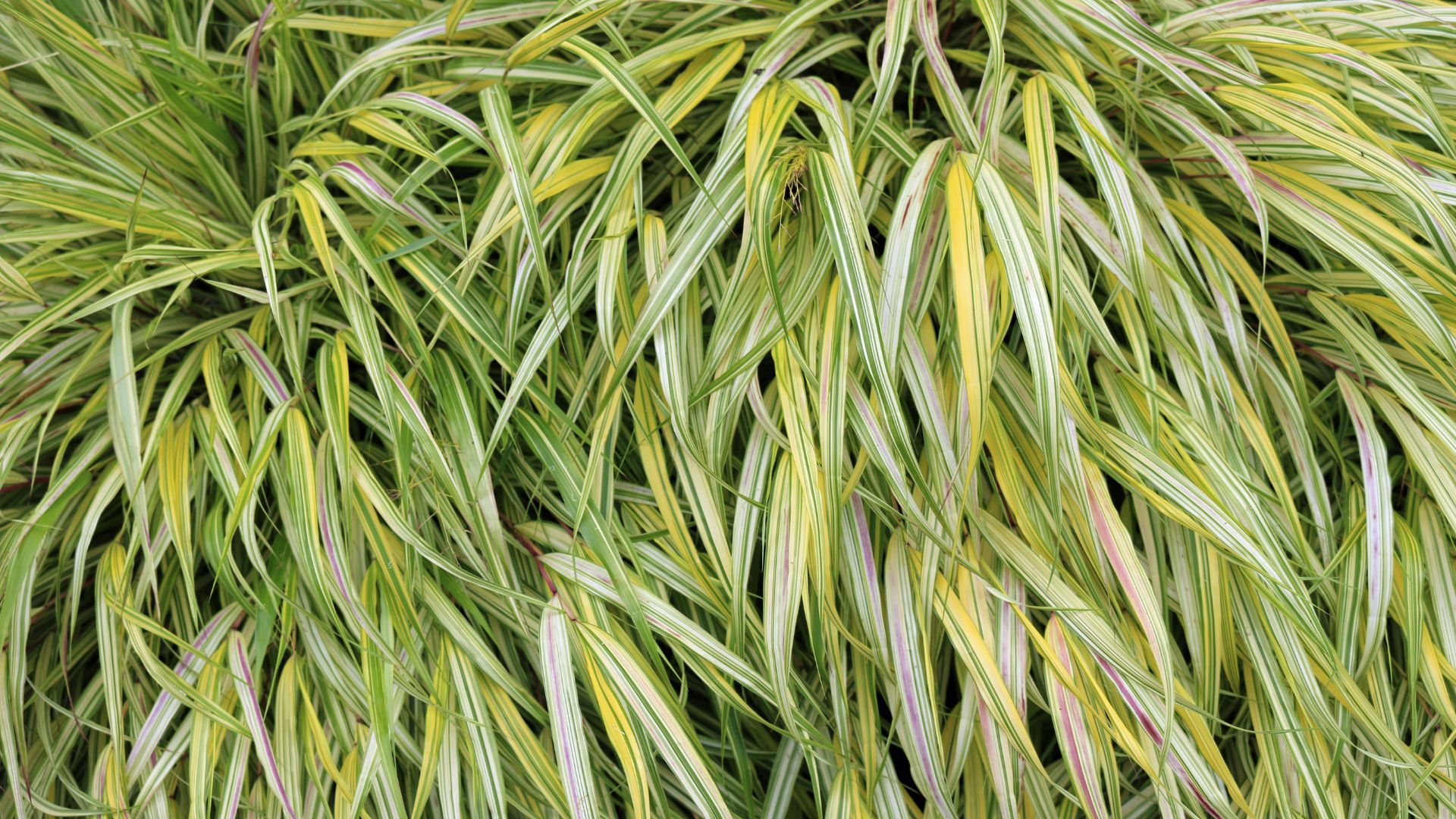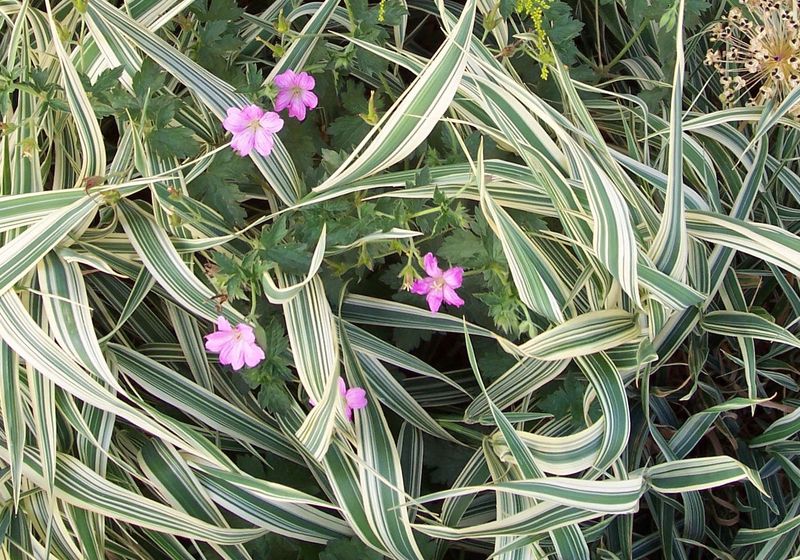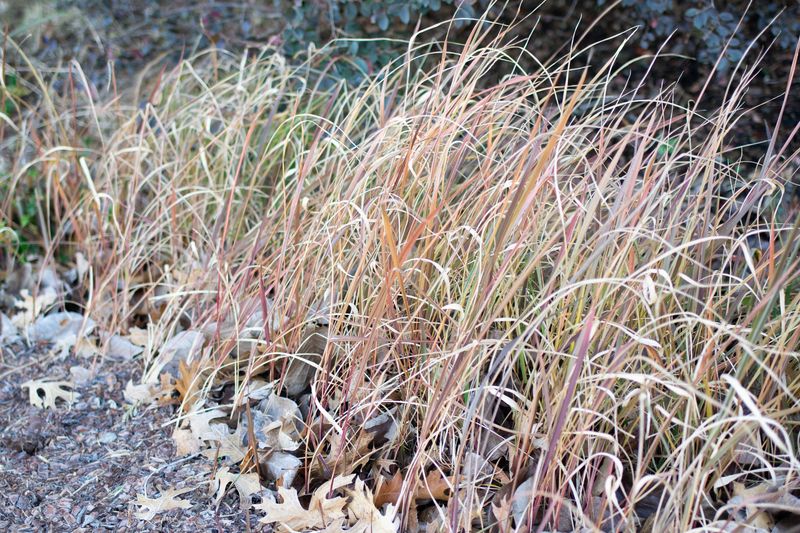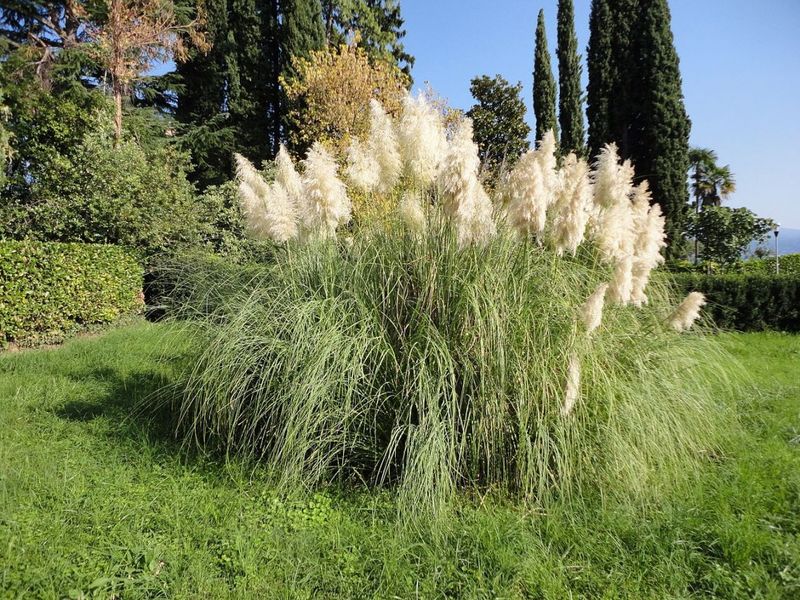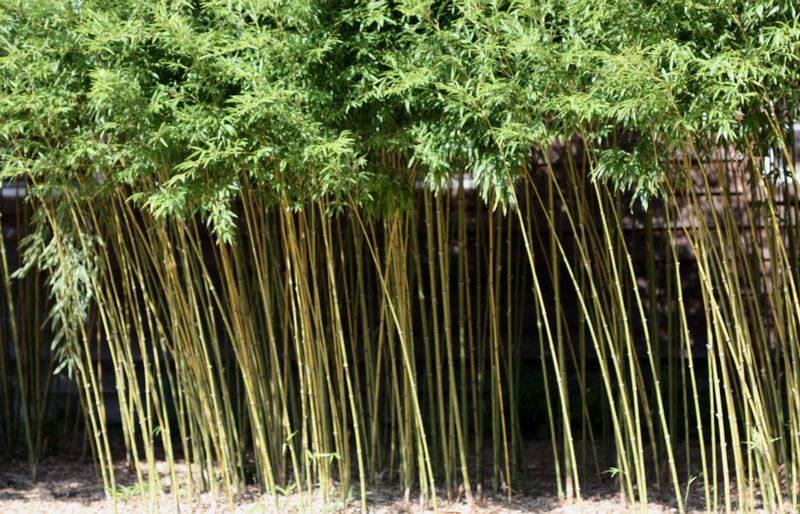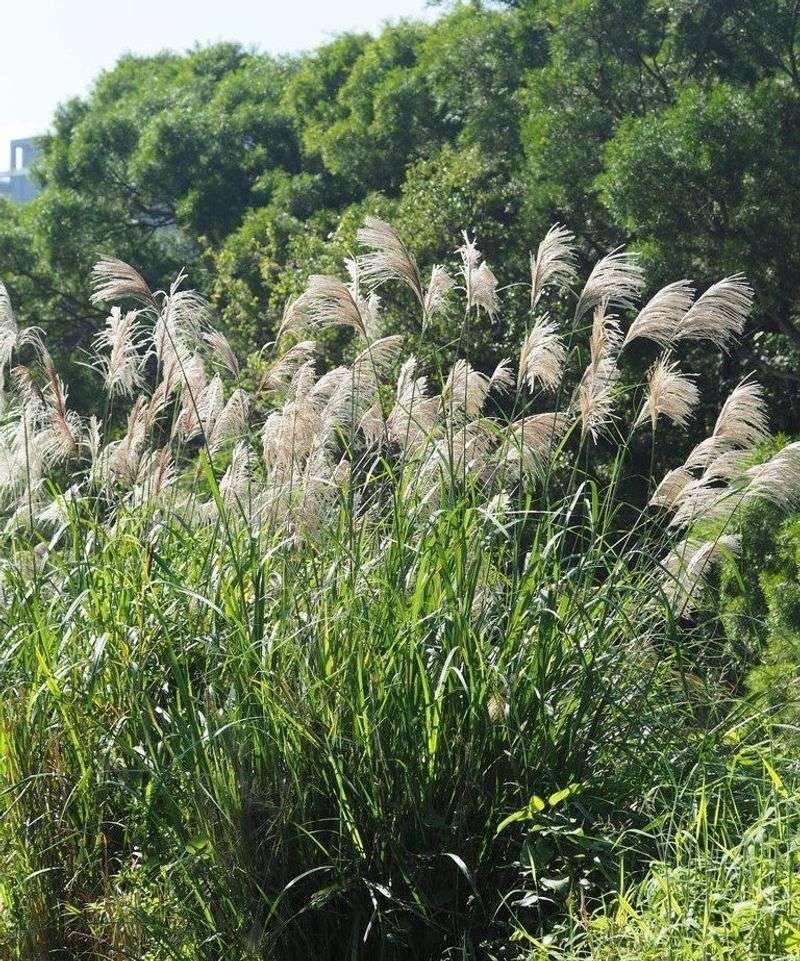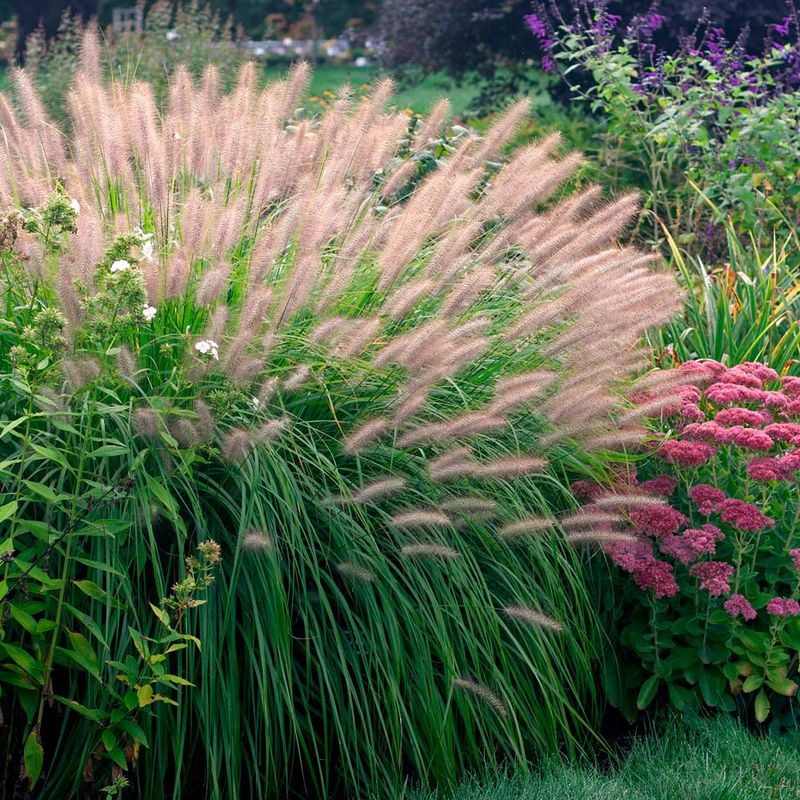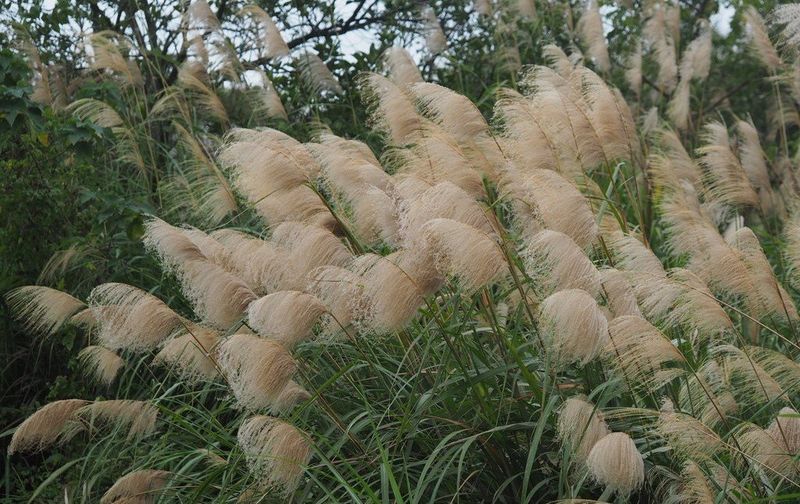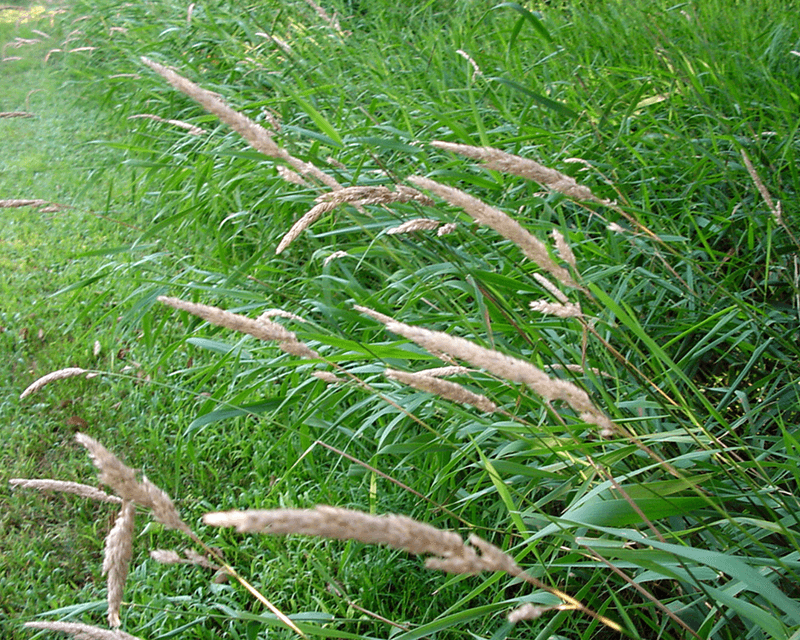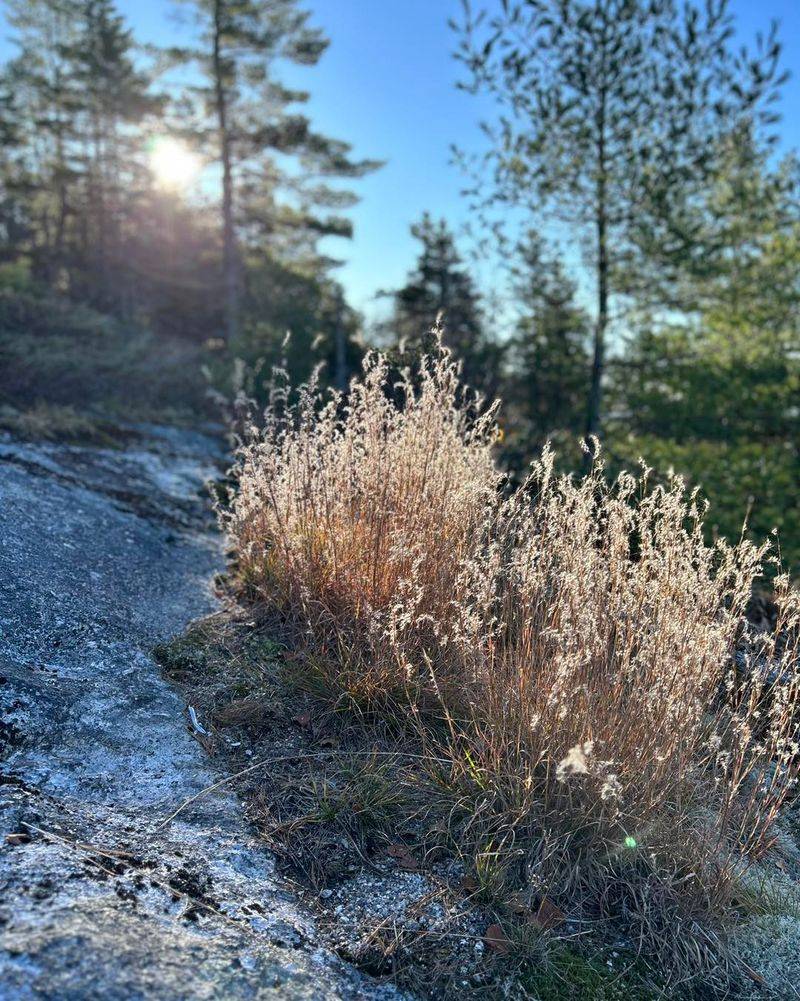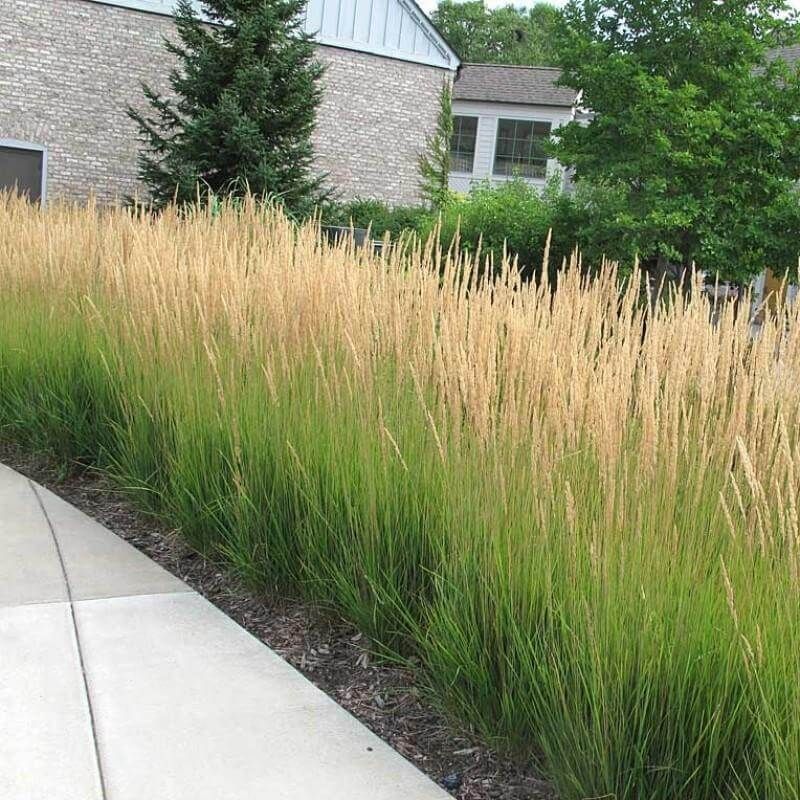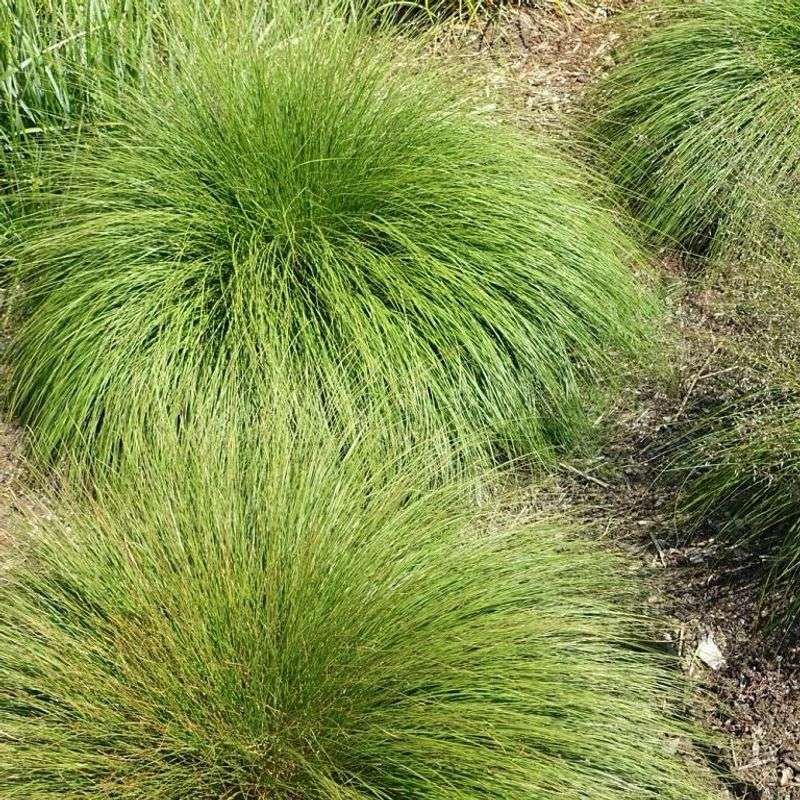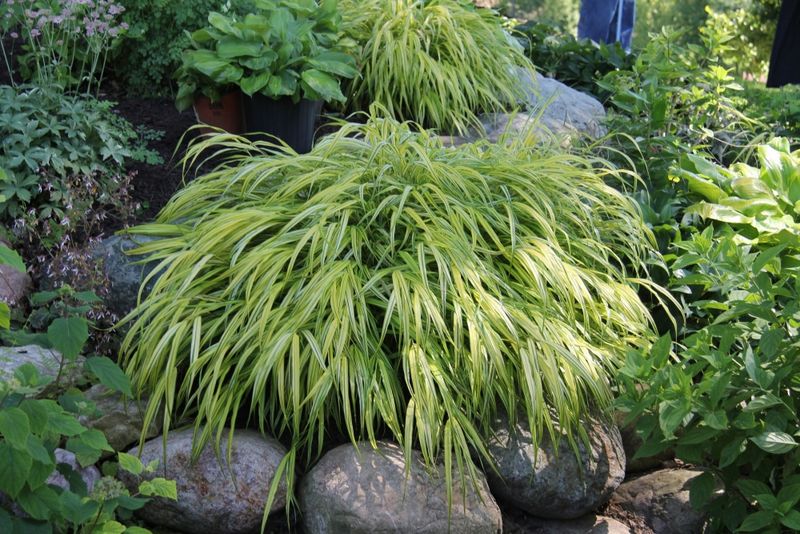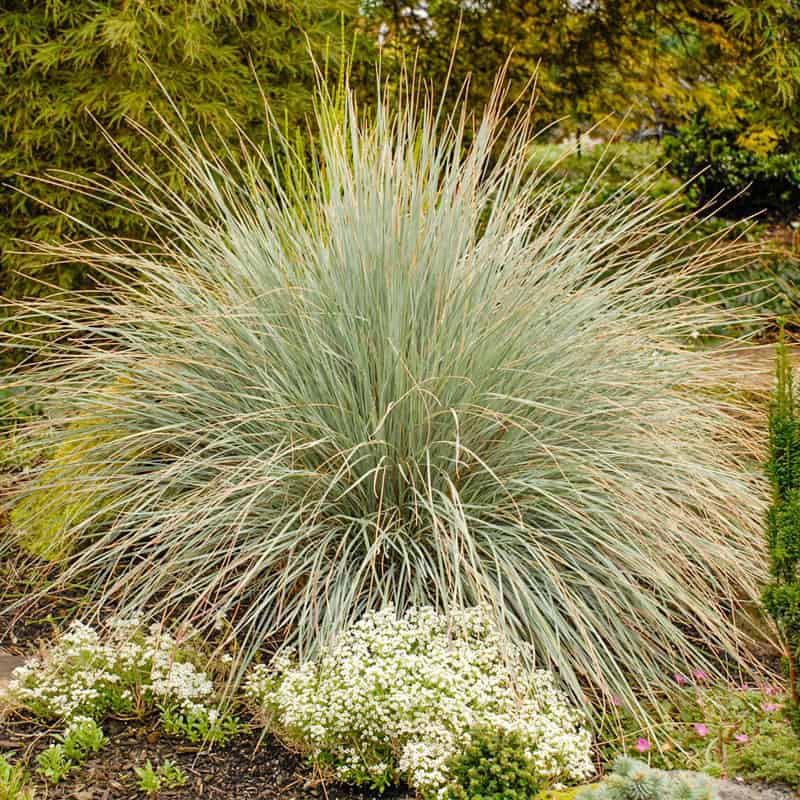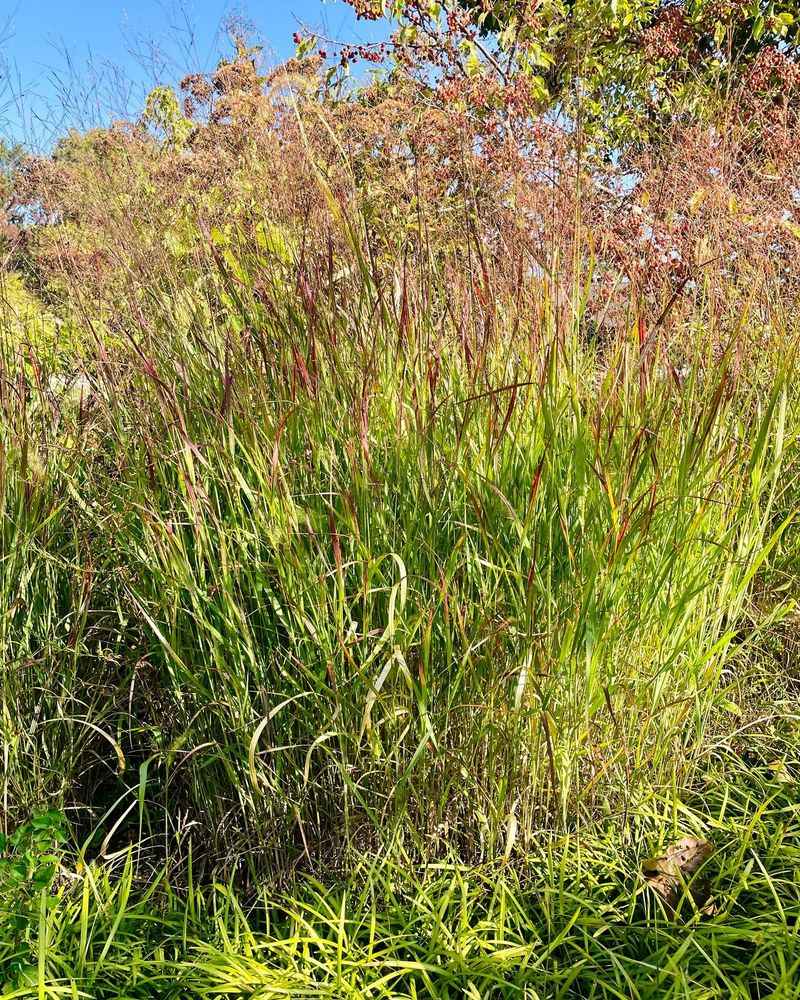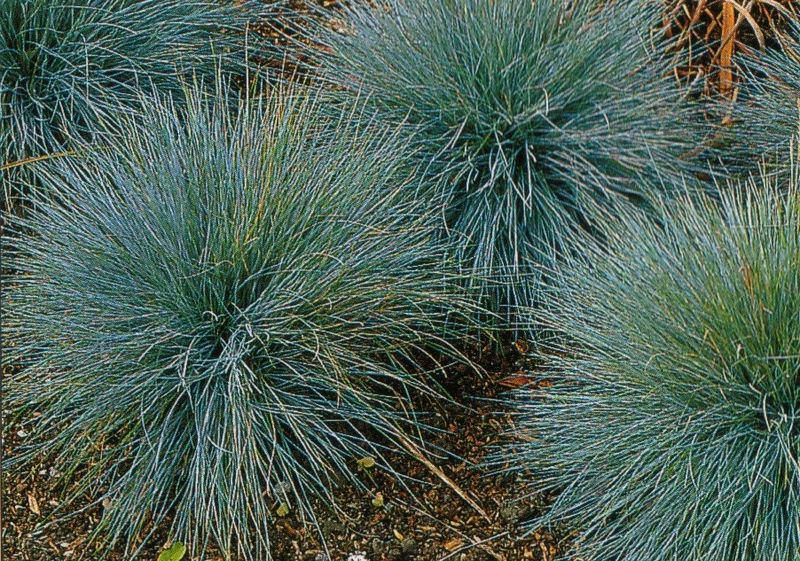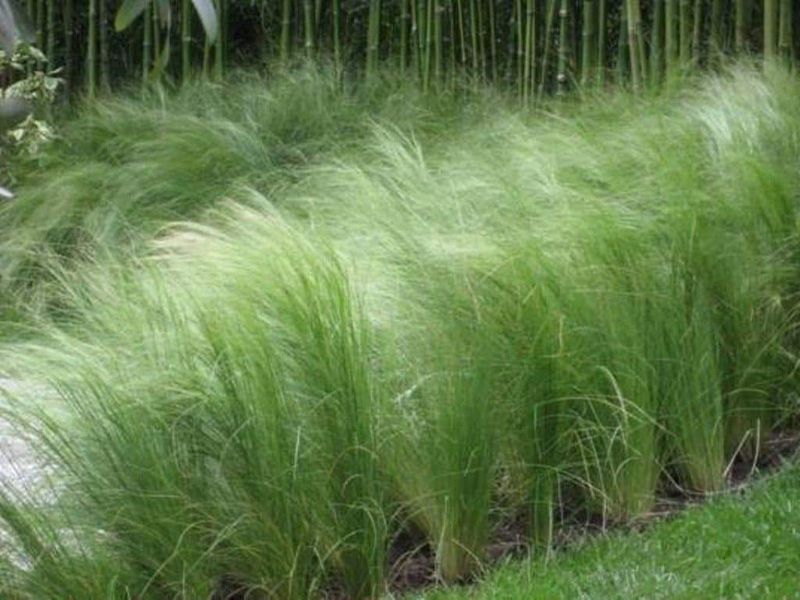Ornamental grasses bring so much to a garden—movement, texture, and that lovely rustling sound in the breeze. But let’s be honest, not all of them know how to stay in their lane. Some spread like wildfire and before you know it, you’re wondering what happened to your poor hostas.
I learned that lesson the hard way after planting Ribbon Grass—big mistake. It looked innocent enough at first, but those runners had a mind of their own. Now I always dig a little deeper before picking any grass for the garden.
So, let’s take a look at which ornamental grasses are worth inviting in—and which ones should absolutely stay at the nursery, no matter how tempting they seem in the catalog.
1. Ribbon Grass
That variegated foliage lured me in years ago, and I’ve regretted it ever since. Ribbon Grass spreads by underground runners that pop up feet away from the original plant. What starts as a cute clump transforms into an unstoppable invasion that chokes out nearby perennials.
Even when you think you’ve dug it all out, tiny root fragments regenerate into new plants. My neighbor’s garden fell victim after just one season when it jumped our property line.
Zone 4-9 gardeners beware—this grass is particularly aggressive in moist soil and partial shade. Skip it entirely unless you plan to grow it in containers raised well off the ground.
2. Cogongrass
Red Baron or Japanese Blood Grass might look striking with its burgundy-tipped blades, but don’t be fooled. This grass is actually a selection of Cogongrass, listed among the world’s worst invasive species. The red variety can revert to its aggressive green form without warning.
Down south, it’s transformed millions of acres into ecological wastelands. The underground rhizomes form dense mats that native plants simply can’t compete with.
While some nurseries still sell the supposedly sterile red cultivar, I’ve watched it escape gardens and establish in nearby natural areas. Trust me—the temporary color isn’t worth the potential environmental damage.
3. Pampas Grass
Those magnificent feathery plumes might catch your eye at the garden center, but Pampas Grass quickly becomes a gardener’s nightmare. A single plant produces thousands of seeds that wind can carry for miles, creating new colonies far from the parent plant.
The saw-toothed leaf edges are sharp enough to slice skin, making removal both difficult and painful. I once helped a friend remove an established clump—we both ended up with multiple cuts despite wearing heavy gloves.
In California and other coastal states, Pampas Grass has become a serious ecological threat, crowding out native vegetation in natural areas. Even in colder zones, it’s simply not worth the risk.
4. Running Bamboo
Running bamboo varieties create a beautiful privacy screen faster than almost any plant—that’s the problem. Their underground rhizomes can travel 15 feet or more in a single season, popping up in lawns, driveways, and even through asphalt.
My gardening buddy planted a small stand of Golden Bamboo along her fence. Three years later, she was digging shoots out of her vegetable garden 30 feet away. Physical barriers must be at least 30 inches deep to contain it.
The removal often requires heavy equipment and multiple seasons of vigilance. If your heart is set on bamboo, choose a clumping variety instead—they provide the look without the neighborhood drama.
5. Maiden Grass
Surprised to see this popular landscape grass on the invasive list? While nurseries still sell it everywhere, Maiden Grass has escaped cultivation in over 25 states. Those gorgeous seed heads contain thousands of viable seeds that readily germinate in disturbed soil.
The original green form is most problematic, though even some cultivars like ‘Morning Light’ self-seed prolifically in warmer regions. Last fall, I spotted dozens of seedlings in my client’s garden, all from a single parent plant.
Northern gardeners might get away with growing sterile cultivars like ‘Strictus’, but southern gardeners should avoid all Miscanthus varieties. The ecological impact simply isn’t worth the ornamental value when better alternatives exist.
6. Fountain Grass
Common Fountain Grass creates some of the prettiest seed heads in the ornamental grass world. Unfortunately, those fuzzy “foxtails” contain hundreds of seeds that germinate readily in open soil. While the straight species behaves in northern gardens, it’s a serious problem in USDA zones 7 and warmer.
Garden centers often sell the closely related Purple Fountain Grass (Pennisetum setaceum) as an annual in cold climates. In warm regions, however, it’s transformed natural ecosystems from Florida to California.
After watching seedlings pop up throughout my garden beds, I’ve replaced mine with sterile alternatives. The purple cultivar ‘Fireworks’ is reportedly sterile but should still be watched carefully in warmer zones.
7. Chinese Silver Grass
Not all Miscanthus varieties are created equal, and this one’s the worst offender. Unlike its cousin Maiden Grass, Chinese Silver Grass spreads aggressively through both seeds and underground rhizomes. The silvery-white seed plumes might look ethereal, but they hide a monster.
A patch planted by the previous owner of my property expanded from 3 feet to over 15 feet wide in just four years. Removing it required a backhoe and three seasons of monitoring for resprouting roots.
Even in zone 4, this grass shows no signs of slowing down. Its ability to form dense monocultures makes it particularly threatening to natural areas near waterways, where pieces of rhizome can wash downstream and establish new colonies.
8. Reed Canary Grass
Sometimes sold in its variegated form as ‘Strawberries and Cream,’ Reed Canary Grass is among North America’s most destructive wetland invaders. The plain green form grows naturally in wetlands, but European strains sold in the nursery trade are particularly aggressive.
After planting some in my pond garden, I watched in horror as it choked out every other plant within two seasons. Its dense root system forms an impenetrable mat that prevents other species from establishing.
Even if you’re tempted by the candy-striped variegated version, resist. These plants often revert to the aggressive green form when growing conditions aren’t perfect. Wetland restoration specialists spend millions fighting this grass—don’t add to the problem.
9. Little Bluestem
Native to North American prairies, Little Bluestem offers everything you want in an ornamental grass without the invasive tendencies. The blue-green summer foliage transforms to stunning copper-orange hues in fall, creating multi-season interest even in snow.
Unlike aggressive spreaders, it forms well-behaved clumps that slowly increase in size. My original plants have stayed exactly where I put them for over five years now. They self-seed just enough to give me a few free plants without becoming weedy.
Drought-tolerant and adaptable to poor soils, Little Bluestem thrives in full sun with minimal care. The cultivar ‘Standing Ovation’ offers particularly upright growth and intensified fall color, perfect for smaller garden spaces.
10. Feather Reed Grass
Karl Foerster Feather Reed Grass earned its popularity for good reason. The vertical seed heads emerge in early summer and remain attractive through winter, providing structure when other perennials have faded. Unlike many ornamental grasses, it’s completely sterile—no unwanted seedlings ever.
Growing in neat clumps that expand slowly, it stays right where you plant it. I’ve had the same plants for nearly a decade without any spreading issues, even in my clay soil where moisture tends to encourage aggressive growth in other species.
This grass performs beautifully in both full sun and partial shade, though it stays more upright with more light. For small spaces, look for ‘Overdam’ with its cream-variegated foliage or the more compact ‘Avalanche.’
11. Prairie Dropseed
Looking for a grass with fountain-like texture that won’t take over? Prairie Dropseed forms perfect mounds of fine-textured foliage that dance in the slightest breeze. The delicate seed heads hover above the foliage like a light mist in late summer.
What gardeners love most about this native grass is its restrained growth habit. Even after seven years, my original plants have remained tight clumps about 2 feet across. They self-seed occasionally but not aggressively, and seedlings are easy to spot and relocate.
An unexpected bonus is the fragrance—the seed heads emit a distinct scent reminiscent of coriander or popcorn on warm fall days. Combine with purple coneflowers and black-eyed Susans for a prairie-inspired garden that pollinators will love.
12. Japanese Forest Grass
For shady spots where most grasses struggle, Japanese Forest Grass creates cascades of color without invasive tendencies. The arching stems move gracefully in the slightest breeze, resembling water flowing over rocks. ‘Aureola’ offers stunning gold-striped foliage that brightens dark corners.
Growth is refreshingly slow—almost too slow for impatient gardeners. My original plants took three years to reach their mature size of about 18 inches tall and wide. This measured growth means you’ll never need to worry about it escaping bounds.
Hardy in zones 5-9, it performs best with consistent moisture and protection from harsh afternoon sun. The foliage turns pinkish-red in fall before going dormant for winter, providing nearly nine months of garden interest.
13. Blue Oat Grass
Steel-blue foliage stands out in any garden, and Blue Oat Grass delivers this cool color year-round in most climates. The perfect hemisphere shape requires zero maintenance to maintain its form—no flopping or splitting like many other ornamental grasses.
After growing it for years in both clay and sandy soil, I’ve never seen it self-seed or spread beyond its original planting spot. The clumps enlarge gradually, reaching about 2-3 feet in diameter at maturity, making it perfect for smaller gardens.
This Mediterranean native thrives in full sun and well-drained soil, showing excellent drought tolerance once established. For maximum impact, plant it where morning or evening light can backlight the foliage, highlighting the intense blue color and fine texture.
14. Switchgrass
Native to North American prairies, Switchgrass combines ecological value with garden-worthy looks. Unlike aggressive non-native grasses, it forms sturdy clumps that stay in bounds while still providing habitat for birds and beneficial insects. The airy seed heads create a misty effect from late summer through winter.
Modern cultivars offer impressive garden performance. ‘Shenandoah’ develops wine-red tips by midsummer, while ‘Northwind’ stands soldier-straight even after heavy snow. I’ve grown both for years without any unwanted spreading.
Remarkably adaptable, Switchgrass handles everything from occasional flooding to drought conditions. It’s particularly valuable for rain gardens and erosion control on slopes, where its extensive root system helps stabilize soil while maintaining a beautiful appearance.
15. Fescue ‘Elijah Blue’
When you need a truly petite grass that won’t outgrow its space, ‘Elijah Blue’ fescue delivers powder-blue color in a perfect small mound. Rarely exceeding 12 inches in height, it’s ideal for edging, rock gardens, or containers where its cool hue contrasts beautifully with warmer-toned plants.
The non-invasive growth habit is almost too well-behaved—these plants stay exactly where you put them, forming tight clumps that expand very slowly. I’ve had the same plants for over five years without any significant increase in size or self-seeding.
While it looks delicate, this grass is surprisingly tough, handling drought and poor soil with ease. The only maintenance needed is a quick combing with gloved hands in spring to remove dead foliage before new growth emerges.
16. Mexican Feather Grass
Fine as hair and constantly in motion, Mexican Feather Grass creates a soft, billowing effect unmatched by other ornamentals. The thread-thin leaves catch even the slightest breeze, resembling a blonde waterfall in the garden. When backlit by morning or evening sun, it practically glows.
While it can self-seed in warmer climates (particularly the West), it’s manageable in most gardens and not aggressively invasive like many Asian grasses. In my zone 5 garden, seedlings appear occasionally but are easy to identify and remove if unwanted.
Incredibly drought-tolerant once established, it thrives in poor, well-drained soil where many plants struggle. The ethereal texture pairs beautifully with plants having bold foliage or flowers, creating striking textural contrasts in contemporary garden designs.

